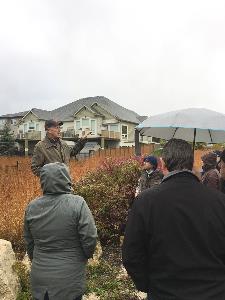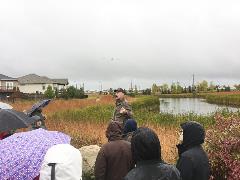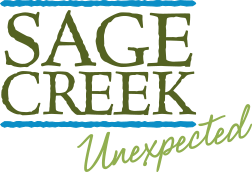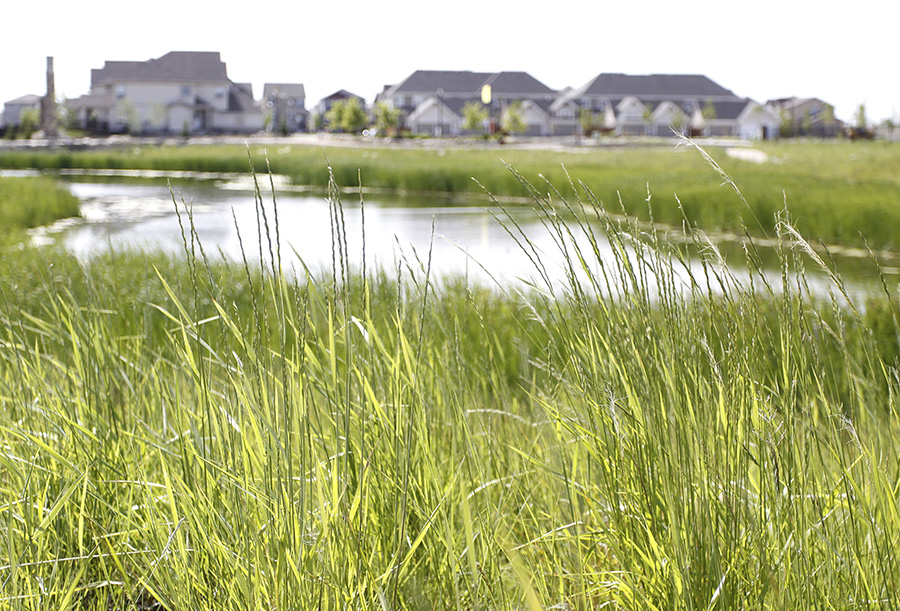On September 27, representatives across Canada gathered in Sage Creek to learn about the design and construction of naturalized wetland systems. This Sage Creek tour was part of a two-day field workshop on naturalized stormwater retention ponds.
Over 50 attendees, including municipal representatives and private development companies attended. Among these representatives were industry members from across Canada including Nova Scotia, New Brunswick and Fredericton to Saskatoon, Regina, Calgary and Edmonton.
Eric Vogan, Vice President of Community Development with Qualico Communities Winnipeg, spoke about Qualico’s experiences of incorporating naturalized landscapes into newer neighbourhoods.
 Vogan explains, “The constructed wetlands in our newer neighbourhoods attract all sorts of wildlife. In addition to geese, we’ve noticed a variety of animals coming into the ponds that are attracted to the natural bio-systems. Then you’re able to watch herons, blackbirds, eagles, geese and ducks all flying into the systems.”
Vogan explains, “The constructed wetlands in our newer neighbourhoods attract all sorts of wildlife. In addition to geese, we’ve noticed a variety of animals coming into the ponds that are attracted to the natural bio-systems. Then you’re able to watch herons, blackbirds, eagles, geese and ducks all flying into the systems.”
Vogan continues, “When trails are placed throughout the wetlands, people enjoy walking through them because of all the action. It’s a thriving system where you feel like you’re a part of something that’s really living rather than a sterile pond.”
Naturalized wetlands are routinely incorporated into Qualico communities, and can be found in Sage Creek, RidgeWood West, Taylor Farm, Pritchard Farms and Oak Bluff West to name a few.
Healthy wetlands are created by integrating ponds with native plants and grasses. The root systems of wetland plants are helpful in absorbing and storing excess nutrients which reduces algae growth. This dynamic ecosystem filters out impurities in the water.
Wetland plants also help to reduce flooding by acting as watersheds for rain and snow run-off while stabilizing the earth through a network of grass roots to prevent erosion.
An additional benefit to the native plants and grasses found in Qualico’s newer neighbourhoods is the lower maintenance, as they don’t require fertilizer or routine watering. This is much easier to maintain than traditional sod and is healthier for the environment as a whole.
These naturalized wetlands are located on public reserve spaces and are maintained by the City or municipality of the community.
 In recent years, the practice of incorporating wetlands by using native plants and grasses into residential areas has become more widespread. Developers are gaining a better understanding of the benefits of protecting, restoring and constructing these landscapes and how they benefit both the environment and the people living near them.
In recent years, the practice of incorporating wetlands by using native plants and grasses into residential areas has become more widespread. Developers are gaining a better understanding of the benefits of protecting, restoring and constructing these landscapes and how they benefit both the environment and the people living near them.
“Qualico has encouraged, through education and communication, to let people know the value of these tall grasses and wetlands,” says Vogan. “Once people understand the purpose of these naturalized stormwater retention ponds, they begin actively participating to maintain these areas and to ensure that the wetlands thrive.”
This two-day workshop was hosted by Native Plants Solutions, a consulting division of Ducks Unlimited Canada. Qualico Communities is a partner of Native Plants Solutions to help raise the bar for environmental responsibility and to evolve landscaping practices.

